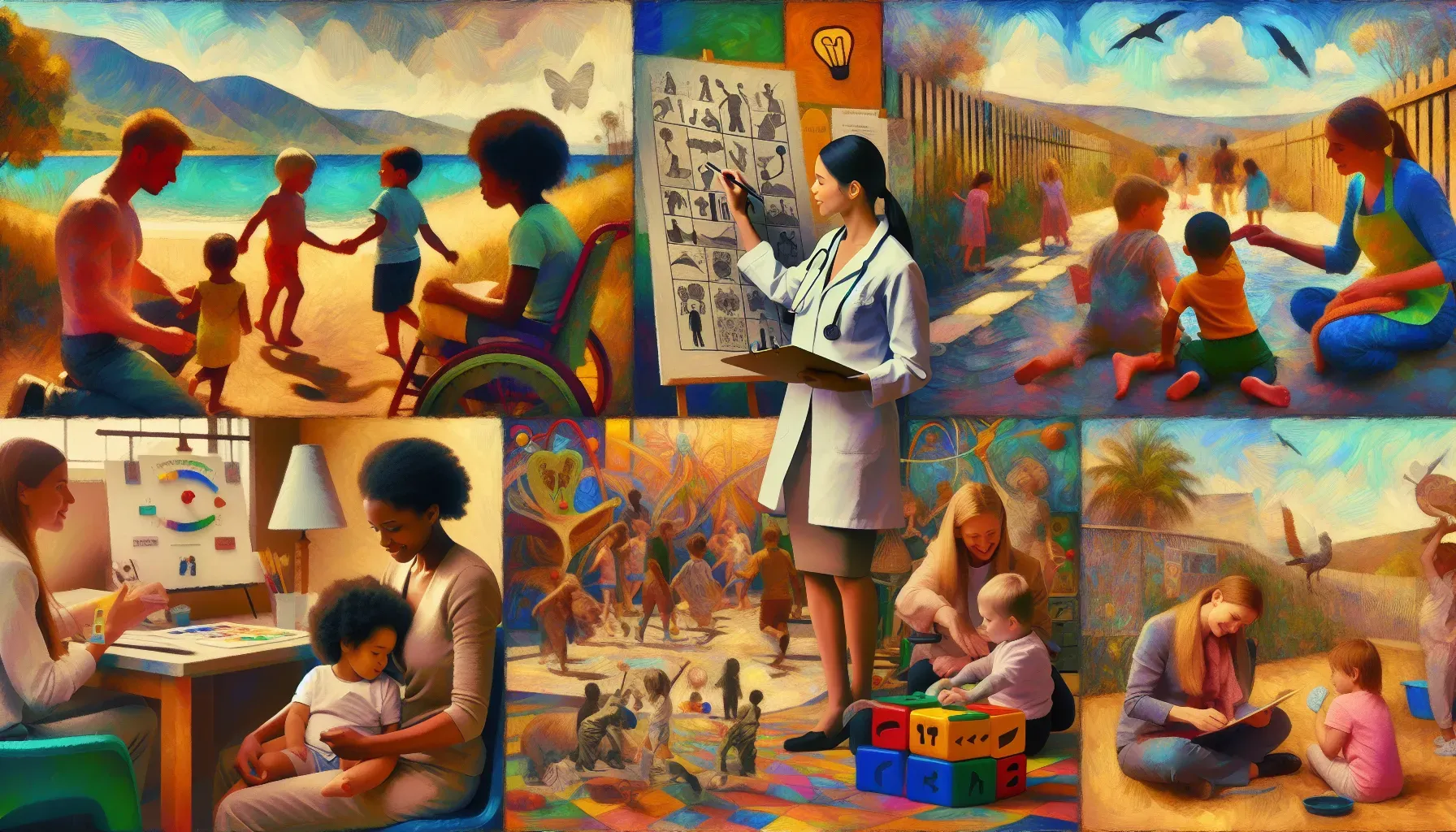Practical Tools and Resources: Supporting Autistic Childrens Development

Autistic children often have unique sensory needs, making it essential to provide them with sensory-friendly toys and activities. These can help in promoting their development and providing a positive sensory experience. When choosing toys, look for ones that offer various textures, colors, and sounds to engage different senses. Building blocks, fidget toys, and sensory balls are excellent choices as they provide tactile stimulation and promote fine motor skills. It's crucial to consider each child's individual sensory preferences to tailor the toys and activities to their specific needs.
Exploring Sensory-Friendly Toys and Activities
Therapy and intervention play a significant role in the development of autistic children. Early intervention services, such as speech therapy, occupational therapy, and behavioral therapy, can make a substantial difference in a child's progress. These services are designed to address specific challenges that autistic children may face, such as communication difficulties, sensory processing issues, and social interaction skills. It's important for parents and caregivers to explore the available therapy options and work closely with professionals to create a tailored intervention plan that best suits the child's needs.
Accessing Therapy and Intervention Options
Visual supports and schedules are valuable tools for autistic children as they provide structure, predictability, and aid in understanding routines and expectations. Visual schedules use pictures, symbols, or words to outline the sequence of activities or events, helping children navigate through their daily routines more independently. Visual supports, such as picture cards and visual timers, can also assist in enhancing communication and reducing anxiety by providing clear visual cues. Integrating visual supports and schedules into a child's environment can offer a sense of security and organization, ultimately supporting their overall development.
Creativity and art can serve as powerful forms of expression for autistic children. Engaging in artistic activities allows children to communicate and express themselves in ways that may be challenging through verbal communication alone. Art provides an outlet for creativity, emotional expression, and sensory exploration. By incorporating art into a child's routine, whether through drawing, painting, or sculpting, caregivers can foster a child's imagination and self-expression while providing a therapeutic and enjoyable experience.
Related Article: Decoding the Behavioral Patterns of Autistic Children: Insights into Decision-Making and Emotional Responses
Understanding the Benefits of Visual Supports and Schedules
Occupational and speech therapy play integral roles in supporting the development of autistic children. Occupational therapy focuses on enhancing a child's daily living skills, sensory processing, and motor coordination, while speech therapy targets communication challenges and language development. These therapies aim to address the unique needs of each child, helping them develop essential skills for independence and social engagement. Collaborating with skilled therapists who specialize in working with autistic children can provide valuable support and guidance for both the child and their caregivers.
Embracing Creativity and Art as a Form of Expression
Inclusive recreational activities offer autistic children the chance to participate in enjoyable and fulfilling experiences while promoting social interaction and physical activity. It's important to seek out inclusive recreational programs that cater to the diverse needs of autistic children, ensuring that they feel welcomed and supported in their participation. Whether it's adaptive sports, nature outings, or sensory-friendly events, these opportunities contribute to a child's overall well-being and provide avenues for social connection and personal growth.
In conclusion, supporting the development of autistic children involves a multidimensional approach that encompasses sensory-friendly resources, therapy, visual supports, creative expression, and inclusive recreational opportunities. By integrating these practical tools and resources into a child's life, caregivers and professionals can create an environment that nurtures their strengths, supports their challenges, and facilitates holistic growth and development.
Frequently Asked Questions
Sensory-friendly toys are designed to meet the unique sensory needs of autistic children. They often feature various textures, colors, and sounds, promoting engagement and development. These toys, such as building blocks and fidget toys, provide tactile stimulation and help enhance fine motor skills, making them essential for supporting a child's growth and positive sensory experiences.
Visual supports benefit autistic children by providing structure and predictability in their daily routines. Tools like visual schedules use pictures or symbols to outline activities, helping children understand expectations and navigate their day more independently. This clarity reduces anxiety and enhances communication, ultimately fostering a sense of security and organization in their environment.
Occupational and speech therapy are crucial for the development of autistic children. Occupational therapy focuses on improving daily living skills and sensory processing, while speech therapy addresses communication challenges. Both therapies aim to meet each child's unique needs, helping them develop essential skills for independence and social engagement through tailored support from skilled professionals.
Check Out These Related Articles

Decision-Making Dynamics: Unraveling Autistic Children's Cognitive Processes

The Vital Role of Emotional Intelligence in Autism Support

The Pursuit of Autistic Joy: Unveiling Creative Avenues for Personal Fulfillment
